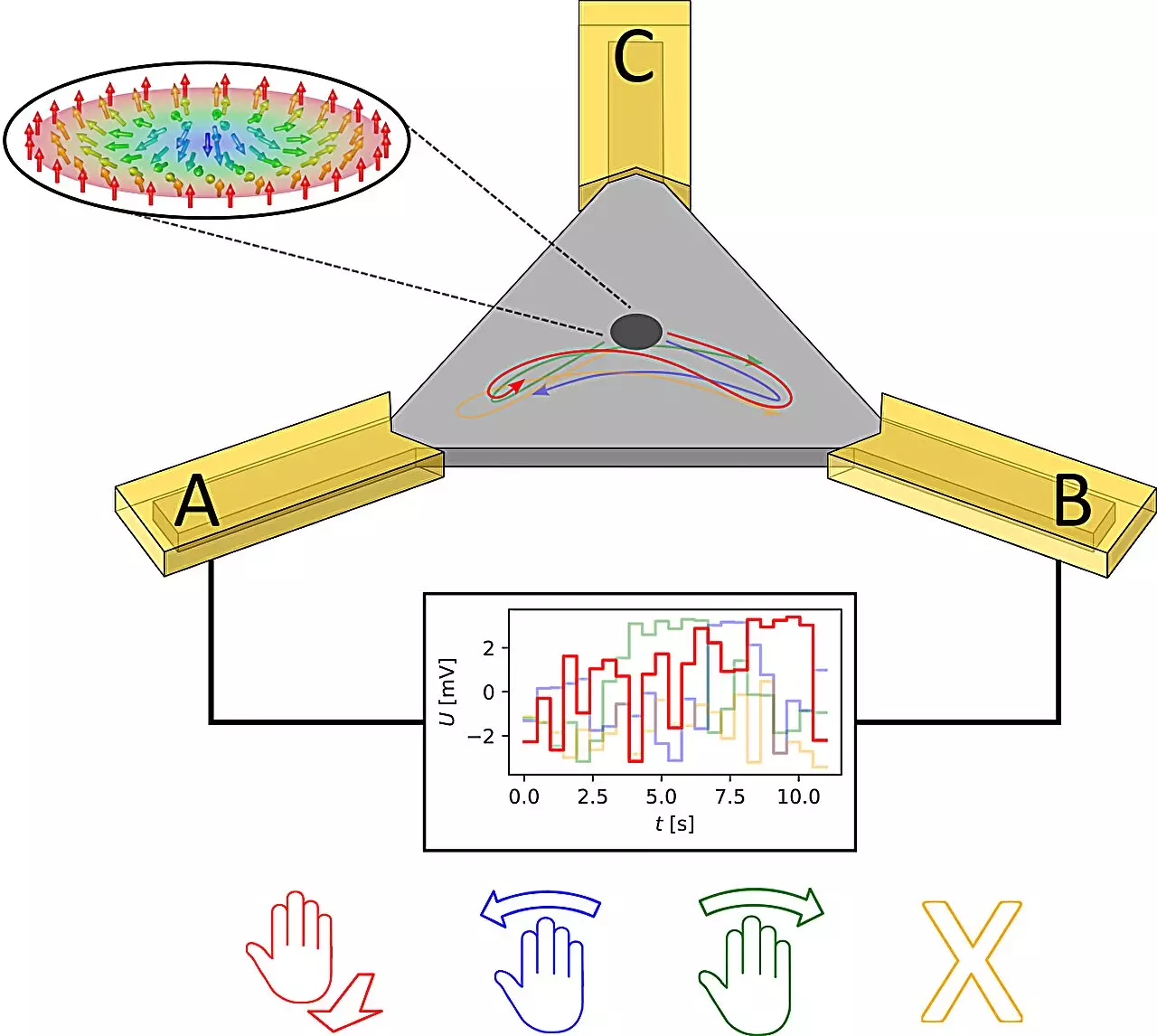Innovations in computing methodologies are continually reshaping our grasp of technology, and a recent study from the Johannes Gutenberg University Mainz (JGU) has made significant strides in this field. Researchers, led by Grischa Beneke under the guidance of Professor Mathias Kläui, have developed an advanced system using Brownian reservoir computing that can recognize hand gestures with impressive accuracy. What distinguishes this technology from traditional neural network approaches is its reduced complexity and energy consumption.
The project not only emphasizes the importance of hardware capability but also showcases how physical systems can achieve computational tasks usually reserved for software-heavy solutions. By employing skyrmions—tiny chiral magnetic formations that possess unique properties—the researchers have crafted a system that can naturally respond to input derived from simple hand gestures.
Reservoir computing is a paradigm that mirrors certain functionalities of artificial neural networks but sidesteps some of their drawbacks. While traditional neural networks often require extensive training sessions that consume considerable energy resources, reservoir computing utilizes a reservoir of interconnected nodes that process inputs in a somewhat chaotic but inherently organized manner.
The beauty of this system lies in its operational efficiency. Instead of needing intricate algorithms that demand comprehensive data analysis, the researchers trained a minimalistic output layer that interprets the data generated by gesture recognition processes. The metaphor of a pond with stones thrown into it aptly describes how the input gestures influence the overall dynamics of the reservoir, producing a complex wave output that serves as a signature for the gesture.
To realize this innovation, the JGU team harnessed two radar sensors developed by Infineon Technologies to gather data on hand movements such as swiping motions to the left or right. This radar technology is designed to capture nuanced motion dynamics that can later be transformed into voltage signals. These signals feed into a specially constructed reservoir, which comprises a thin film stack shaped into a triangular configuration. Within this triangle, skyrmions can exhibit remarkable dynamic behavior influenced by voltage variations.
Beneke aptly noted, “In reaction to the supplied signals, we detect complex motions,” highlighting the unique capabilities afforded by the skyrmion’s complex interactions. This relationship between the radar input and the skyrmion movement forms the foundation for accurately inferring gesture data from physical actions.
One of the most compelling aspects of this research is the marked improvement in energy efficiency compared to conventional software approaches. While traditional systems may require intense computational resources to achieve similar levels of accuracy, the Brownian reservoir, fortified by the strategic use of skyrmions, can operate effectively with substantially lower energy inputs. Skyrmions are particularly well-suited for this task due to their ability to move with minimal currents, a significant advancement as low energy consumption becomes critical in modern computing environments.
The comparison between gesture recognition success rates from both the Brownian reservoir computing method and traditional software models revealed that the former not only matched but occasionally surpassed the accuracy of its software-based counterparts. As technologies evolve, refining this interaction between hardware and software theories becomes increasingly vital.
Looking ahead, the research team envisions further enhancements. Current read-out procedures utilize a magneto-optical Kerr-effect microscope to interpret signals from the reservoir, but substituting this with a more compact magnetic tunnel junction could prove advantageous. Such a shift could yield a smaller overall system footprint while maintaining or even enhancing gesture detection fidelity.
The insights gleaned from the researchers’ findings highlight critical prospects for the use of skyrmions beyond mere data storage solutions. Their dual application in computing and sensor technologies provides a richly interactive space where traditional computing paradigms are upended, paving the way for innovative applications in modern smart devices and next-generation human-computer interaction platforms.
The development of this Brownian reservoir computing system introduces transformative methodologies for gesture recognition. High accuracy combined with low energy demands positions this technology as a strong contender in the realm of computing. The pioneering work from JGU illustrates that convergence between physical phenomena and computing potential can yield fascinating advancements while still conserving energy resources—an essential aspect in our rapidly digitizing world. As researchers continue to refine and adapt these principles, we can anticipate an array of emerging applications that may redefine our engagement with technology.

